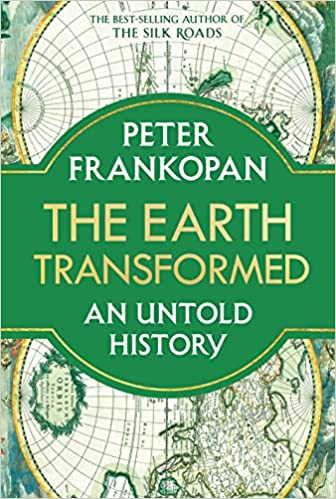“Teasing apart the connection between humans and climate, explaining how “we are the product of massive climate change in the past”, and looking ahead to crises anew.” [Peter Frankopan: ‘The Earth Transformed’]
“It was natural processes that buried carbon dioxide that led to the glaciation of Antarctica. The burning of fossil fuels is now having an opposite effect, causing the depletion of the ice at a remarkable rate.” [Prof Dame Jane Francis, Director of the British Antarctic Survey]
.
The earth’s climate has changed considerably and often over the last billions of years of course – but what is clear is that the current change in the climate is due to human interference on a large scale.
This was discussed on Radio 4’s Start the Week:
The world is now warming faster than at any point in recorded history. Kirsty Wark talks to an historian, scientist and novelist about how to convey the story and impact of climate change.
Floods, droughts, volcanic eruptions, hurricanes and solar activity have all shaped the natural history of our world from its formation.
In The Earth Transformed the historian Peter Frankopan looks back at how the climate has constantly changed our world, but also at the impact of extreme climatic events on ancient human civilisations – often violent and epic in scale, from regime change to demographic decline. However, since the Industrial Revolution the balance has shifted and anthropogenic impacts on the climate can be seen more clearly. Peter Frankopan tells Kirsty Wark that learning lessons from the past has never been more important in tackling a precarious future.
Professor Dame Jane Francis is Director of the British Antarctic Survey. As a geologist by training, she studies fossils to understand the change from greenhouse to icehouse climates in the polar regions over the past 100 million years. Her research enables others to map the huge changes now happening in the Antarctic and the range of possible scenarios for the future…

Start the Week – Climate – past, present and future – BBC Sounds
Here’s Peter Frankopan on Channel Four from a fortnight ago:
“We’re the only species who have worked out to blow up everything and kill everyone”. In his latest book, The Earth Transformed, Peter Frankopan takes on the entirety of the history of planet earth, and looks at how our lives have been shaped by environmental changes since the dawn of our planet, 4.5 billion years ago, until the present day. He tackles the transformation of the earth, teasing apart the connection between humans and climate, explaining how “we are the product of massive climate change in the past”, and looks ahead to crises anew. “Mass extinction is already underway” – Peter Frankopan on how humans have shaped the earth – YouTube
And here are a couple of reviews: The Earth Transformed: An Untold History by Peter Frankopan – review by Felipe Fernández-Armesto and The Earth Transformed by Peter Frankopan review – why humans have always been under the weather | History books | The Guardian
Jane Francis has been made a trustee of the NHM: Professor Dame Jane Francis to join Natural History Museum’s Board of Trustees | Natural History Museum
Here she is talking about her time in the Antarctic: Breaking the Ice: Jane Francis
And here she is talking last month about her work there:
Continents as we know them today emerged as a consequence of the mechanism of plate tectonics, which led to the fragmentation of a super-continent. One such fragment, the Antarctica, now is in the ocean at the South Pole, covered in thick ice-sheets that contrast with its long-past history where it was adorned by forests and inhabited by animals including dinosaurs. It was the natural processes that buried carbon dioxide that led to the glaciation of Antarctica. The burning of fossil fuels is now having an opposite effect, causing the depletion of the ice at a remarkable rate. Antarctica: Isolated Continent – Professor Dame Jane Francis, British Antarctic Survey – YouTube